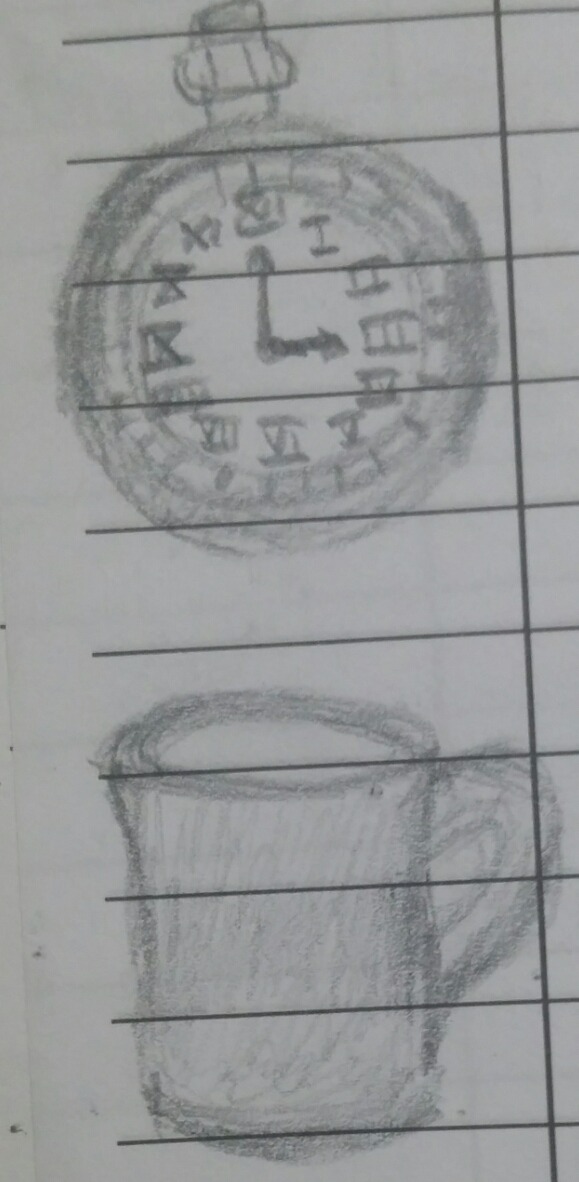Dive into your creative stream
Clock - Blog Posts

Sketchtember Challenge Day #1: Time


Idk what I’m doing with my life anymore. But hey first post 🤭

Star_kit!!
Art by me~ My new OC Star_kit~

Clocky guy with a backpack traveling time. #originalart #digitalpiece #clock #walkingwatch #backpack #littleplants #cloudywalk #timeywimey #runningatthespeedof #rewindtime #illustration #kids #nocoppa #getamoveon https://www.instagram.com/p/B9xam2lHsK2/?igshid=1b9u2cyb4vkfi
Five Things You Need to Know About the Deep Space Atomic Clock

We are set to send a new technology to space that will change the way we navigate spacecraft — even how we’ll send astronauts to Mars and beyond. Built by our Jet Propulsion Laboratory in Pasadena, California, the Deep Space Atomic Clock is a technology demonstration that will help spacecraft navigate autonomously. No larger than a toaster oven, the instrument will be tested in Earth orbit for one year, with the goal of being ready for future missions to other worlds.
Here are five key facts to know about our Deep Space Atomic Clock:
1) It works a lot like GPS

The Deep Space Atomic Clock is a sibling of the atomic clocks you interact with every day on your smart phone. Atomic clocks aboard satellites enable your phone's GPS application to get you from point A to point B by calculating where you are on Earth, based on the time it takes the signal to travel from the satellite to your phone.
But spacecraft don't have GPS to help them find their way in deep space; instead, navigation teams rely on atomic clocks on Earth to determine location data. The farther we travel from Earth, the longer this communication takes. The Deep Space Atomic Clock is the first atomic clock designed to fly onboard a spacecraft that goes beyond Earth's orbit, dramatically improving the process.
2) It will help our spacecraft navigate autonomously

Today, we navigate in deep space by using giant antennas on Earth to send signals to spacecraft, which then send those signals back to Earth. Atomic clocks on Earth measure the time it takes a signal to make this two-way journey. Only then can human navigators on Earth use large antennas to tell the spacecraft where it is and where to go.
If we want humans to explore the solar system, we need a better, faster way for the astronauts aboard a spacecraft to know where they are, ideally without needing to send signals back to Earth. A Deep Space Atomic Clock on a spacecraft would allow it to receive a signal from Earth and determine its location immediately using an onboard navigation system.
3) It loses only 1 second in 9 million years

Any atomic clock has to be incredibly precise to be used for this kind of navigation: A clock that is off by even a single second could mean the difference between landing on Mars and missing it by miles. In ground tests, the Deep Space Atomic Clock proved to be up to 50 times more stable than the atomic clocks on GPS satellites. If the mission can prove this stability in space, it will be one of the most precise clocks in the universe.
4) It keeps accurate time using mercury ions

Your wristwatch and atomic clocks keep time in similar ways: by measuring the vibrations of a quartz crystal. An electrical pulse is sent through the quartz so that it vibrates steadily. This continuous vibration acts like the pendulum of a grandfather clock, ticking off how much time has passed. But a wristwatch can easily drift off track by seconds to minutes over a given period.
An atomic clock uses atoms to help maintain high precision in its measurements of the quartz vibrations. The length of a second is measured by the frequency of light released by specific atoms, which is same throughout the universe. But atoms in current clocks can be sensitive to external magnetic fields and temperature changes. The Deep Space Atomic Clock uses mercury ions - fewer than the amount typically found in two cans of tuna fish - that are contained in electromagnetic traps. Using an internal device to control the ions makes them less vulnerable to external forces.
5) It will launch on a SpaceX Falcon Heavy rocket

The Deep Space Atomic Clock will fly on the Orbital Test Bed satellite, which launches on the SpaceX Falcon Heavy rocket with around two dozen other satellites from government, military and research institutions. The launch is targeted for June 24, 2019 from NASA's Kennedy Space Center in Florida and will be live-streamed here: https://www.nasa.gov/live
Make sure to follow us on Tumblr for your regular dose of space: http://nasa.tumblr.com.







Here’s week 2 of this year’s inktober! I’m really happy with the results of these prompts! ☻


Recently I entered an art poster contest for Amazon Prime's series, Lore! I didn't get selected, but at least I got to practice painting and participate in something really cool 😀 Also, that explains my fascination for that specific clock 🕰️
Realmente no se en que momento me enamore tan perdida e irremediablmente de ti, no se en que instante en tu mirada de zafiro me perdí, creí que te quería pero ahora veo que te amo; eres mas de lo que imagine, eres especial y único para mi...

Jus some classroom doodles , also working on a todobakudeku pride month drawing so yuh (click /tap to see full thing if you can't properly btw sometimes tumblr cuts things out at least with this phone a bit :/ if you wonna ofc)









Timelapse video of people strawling around at the Kossuth square in front of the Reformed Great Church, Debrecen, Hungary. The evening of the 19th of November 2019.
Timelapse The old clock tower of the Evangelical Church (Biserica Evanghelică CA) at Republicii Street (Strada Republicii) in Rasnov (Râșnov). View from Râșnov Fortress (Romanian: Cetatea Râșnov, German: Rosenauer Burg)

The sundial at St Michael’s Mount, Marazion


A ferrofluid clock #sciphy4all #science #physics #ferrofluid #clock

Long live for Thanksgiving! 🏃♀️ 🏃♀️ DOUBLE DIP 🏃♀️ 🏃♀️ $11.49 with 50% off code 50BRTFBJ & click save $1 coupon https://www.amazon.com/promocode/A2BNDP6T65JYM7 #thanksgiving #blackfriday #amazon #coupons #lightingdeals #clock #giftideas @couponangel29 @amazon @crazy_4_coupon_deals @targetdealfinder @kimlovescheapdeals @couponing101 @babydealfinder # wallclock https://www.instagram.com/p/BqbRcO9gKWE/?utm_source=ig_tumblr_share&igshid=mx1k527w0vhz

Long live for Thanksgiving! https://www.amazon.com/promocode/A2BNDP6T65JYM7 #thanksgiving #blackfriday #amazon #coupons #lightingdeals #clock #giftideas @couponangel29 @amazon @crazy_4_coupon_deals https://www.instagram.com/p/BqbOf83ADDk/?utm_source=ig_tumblr_share&igshid=1bajarml09zu7

Enclosed Miami Mid-sized elegant dark wood floor enclosed kitchen photo with a farmhouse sink, glass-front cabinets, white cabinets, marble countertops, white backsplash, paneled appliances and no island

Inktober2018 day 14: clock
The Clock
The clock ticks,
ticks to leave us all behind.
Behind in past
where we thought of future,
but where are we now?
Oh! I wonder...
Somewhere in between
'should' and 'would' we live,
live, but don't give
enough to the clock that ticks
today, to give us life.


Austin Bathroom Large transitional master white tile and porcelain tile porcelain tile bathroom photo with shaker cabinets, dark wood cabinets, an undermount sink, a one-piece toilet, white walls and quartz countertops

LIVE, Why does the star shine? Why is our time not eternal? We wish our time is eternity like this universe.
なぜ星は輝く? なぜ僕らの時間は永遠じゃないの? この宇宙のように果てしなければ良いのにね

Patio Natural Stone Pavers in DC Metro

Every thing 3D #love #og #myself #every #things #poste #self #tree #25 #2 #day #message #monday #photo #camera #wheather #clock #map #video #walle #note #reminder #stock #itunes #app #store #ibooks #health #settings







